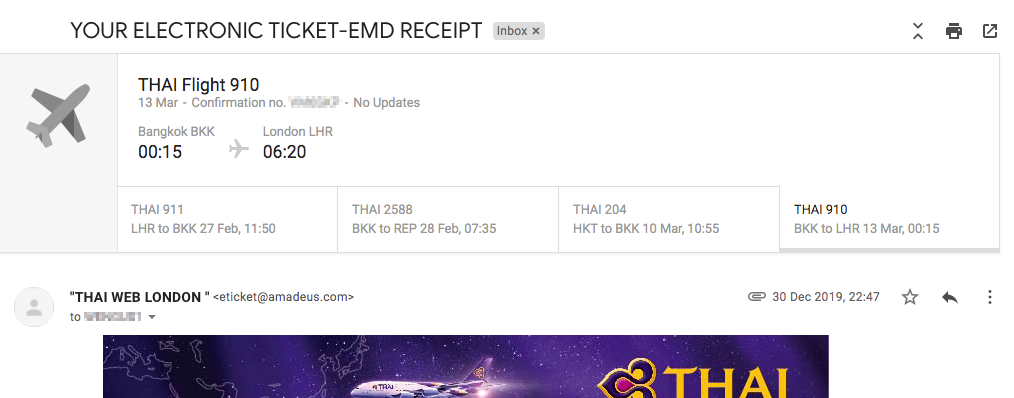Email Schema Markup and Gmail Promotions Tab

If you use Gmail, chances are you’ve seen flight details, online purchases, or confirmation emails look a little different in your inbox. So what are these types of emails? And how can they enhance how information is digested?
What is it?
This code is known as Schema Markup and is managed and maintained by Schema.org, a community founded by Google, Microsoft, Yahoo and Yandex. It’s used to identify information on web pages for search engine optimization but can also be included in email. Emails with Schema Markup will be read by Gmail and are used to promote specific content or highlight important information within an email.
There are 6 main features email markup can do:
Currently, Gmail is the only email provider that reads Schema Markup so many of the features are Gmail or Google related.
Gmail Actions – Used to focus on making the user click on a link while reading the subject line. Good for immediately confirmation something (ie. booking, event, signup) or click to save (add song to playlist, apply gift card code to account). They can also be used to take the user to a web page such as travel check in or reset password page.
Gmail Highlights – Used to feature the most important information in the email to the user. Google has mostly categorised this for bookings (travel tickets, event tickets, hotels), restaurant reservations and shopping (online order confirmations, delivery information, invoices). This is super useful for people who just want to scan their email for a specific piece of information instead of reading the entire thing.
Gmail desktop view of a flight confirmation. Above the email, the essential details within it have been extracted and displayed.
Gmail Promotions Tab – Google has a separate tab in your inbox to display emails that contain deals and offers. In the inbox, they can contain small images with prices/text to link to a webpage, deal badges to make the deal more obvious. There is even the possibility to make a carousel to show multiple items.
Gmail app on Android. At the top of the inbox, above the first email is the Promotions Tab.
Answers in Search – Emails that feature markup will be indexed for the users account and results will appear in Google Search if they’re logged in searching on Google.com. Typing my flights, my bookings or my reservations will display information taken from the inbox.
If using Google Now on Android phones, users can see at a glance all their bookings (events, hotel, restaurant or hotel) in a list. This is more useful than scrolling through the calendar app.
Confirmation Cards – Android phone users will get notifications of upcoming events or bookings. No need to set reminders in your calendar, Google would have already done it for you.
Google Calendar – Emails that contain date and time information that are categorized as events, restaurant or travel booking, will be automatically inserted into the users Google calendar.
Google Calendar event. Automatically generated event which includes flight details.
What is it good for?
It’s no surprise that using Email Schema Markup greatly benefits users who are part of the Google ecosystem. It’s great for power users who don’t always want to read the entire email but just to know the primary objective / specific information. The Google Promotions Tab collects all the retail and deal specific emails and displays them in a separate tab so you can see those advertorial emails next to your personal inbox. If they’re all together, you can dismiss them quicker or read them all in one go. Just looking at the Google Promotions inbox, you could be given the discount code just by reading the subject line, so the code can be used immediately without opening and reading the email.
How do we get to use it?
If you’re looking to implement schema in email, you have to meet certain criteria set out by Google and be whitelisted by them . They are, afterall, the ones who will be adding extra email processing power into your sends. You must already be sending a high volume of emails per day and have a very low spam rate. The email address used to send has to be static, such as [email protected].
Using the desired email address, send a real use (actual one that goes to your users) email to [email protected] and then fill in the Gmail Schema Whitelist Request form. Once you’re on Google’s whitelist, you can then start adding code to your emails. Much like SEO, it can be added to existing emails so emails scheduled to send can be modified using schema markup. It won’t change the layout or content visible by users, but it’ll work behind the scenes.
Weng Iam
Coder @ Action Rocket



